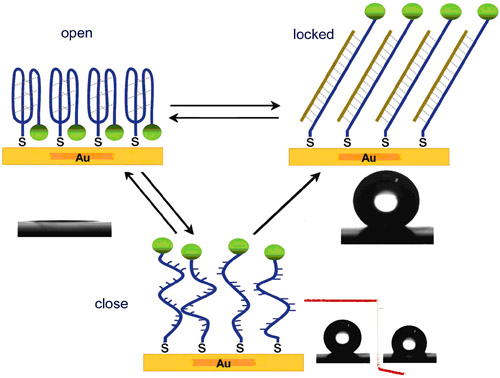| |
Control of surface properties has long been an interested topic in material science, such as wettability, because of its widely practical applications. Inspired by nature, we recently reported intelligent switchable surfaces between superhydrophilicity and superhydrophobicity, responsive to external stimuli such as heat and light, through the introduction of surface roughness. But so far nearly all of these switches of surface wettability are limited in entropy-driven process, and the enthalpy-driven switchable surfaces are not well explored, although various important life phenomena and molecular recognition behaviours are often dominated by the enthalpy-driven process.
With the supports of National Natural Science Foundation, Department of Science and Technology and Chinese Academy of Science, Prof. Lei Jiang’s group, cooperating with Prof. Dongsheng Liu’s group, designed and created an enthalpy-driven 3-state responsive surface, which can switch between stable superhydrophilic, metastable superhydrophobic and stable superhydrophobic states. This macroscopic surface phenomenon originates from the coordinative effect of the collective nanoscale motion of DNA nanodevices and surface microstructure. Its switching behaviour could provide a model to cognize biological behaviour, such as short-term memory and long-term memory, as well as open a new hint for designing intelligent surfaces.
Angew. Chem. Int. Ed. (2007, vol 46, 3915-3917)

Figure Schematics of 3-state Switching Superhydrophilic/superhydrophobic Surface
, |
|
